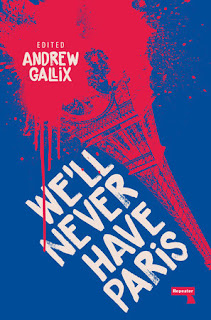I.
You may have noticed that all kinds of powerful people have been adopting the phrase build back better as a kind of zen fascist mantra over the last few years. The same people - let's call them the global elite - have also started to wear a circular multicoloured little badge and I thought readers might like to know why that is ...
II.
In September 2015, the leaders of all 193 member states of the UN adopted a universal programme known as Agenda 2030.
At the heart of this programme are a number of Sustainable Development Goals (known more simply as SDGs or the Global Goals), which promote the utopian fantasy of a better world for everyone by the end of this decade; provided that is, we all work together and accept that far-reaching social, economic, and environmental change is necessary.
If we all mobilise successfully, argue those who are seriously pushing this agenda, then we will meet the 169 targets contained within the 17 Global Goals [1] and transform society from top to bottom; ending all forms of poverty, achieving social justice, and tackling climate change, for example.
Whilst the private sector, the media, civil society, and the general public will all have a role to play in this Great Reset, obviously governments will be expected to take a lead and establish the necessary frameworks via which the Global Goals can be implemented and achieved. The UN will monitor and report on their progress "towards building an inclusive, sustainable and resilient future for people and planet" [2].
Of course, although unanimously agreed, the Goals are not legally binding and the UN doesn't have the power to enforce them - it can merely encourage everyone to get on board. Those who wish to show their support for the New World Order can even buy their very own SDG pin on Amazon: click here.
And once you have the badge or brooch, you might want also to follow these suggestions about how to contribute to Agenda 2030:
"Spread the word about the Global Goals, so that more people can take action and contribute to meeting the Goals.
Join an organization that actively contributes to meeting the Goals.
Reduce your general waste and your enviromental footprint. Avoid plastics, take the train instead of the airplane, the bike instead of the car.
Make conscious choices in your consumption. Buy local and try to make sure what you buy is produced in fair and sustainable ways.
Show compassion and stand up against racism, exclusion, discrimination and injustice.
Use your imagination. The future depends on our ability to imagine it." [3]
That last line is, of course, an expression of the purest idealism. In fact, it's almost a form of magical thinking; i.e., the belief that one's thoughts and fantasies can have real effects in the actual world providing one really, really wants something to happen or to change. The young and religiously-minded are particularly susceptible to such thinking. And the insane ...
Notes
[1] The 17 Global Goals are:
1. No poverty
2. Zero hunger
3. Good health and well-being
4. Quality education
5. Gender equality
6. Clean water and sanitation
7. Affordable and clean energy
8. Decent work and economic growth
9. Industry, innovation and infrastructure
10. Reduced inequalities
11. Sustainable cities and communites
12. Responsible consumption and production
13. Climate action
14. Life below water
15. Life on land
16. Peace, justice and strong institutions
17. Partnerships for the Goals
The order of the Goals does not signify priority; "all are critical and interdependent".
[2] All information in this post is taken from globalgoals.org. Lines quoted are from the Q&A section.
[3] For more hints and tips of good things you can do, read the UNs Lazy Person’s Guide to Saving the World, click here.
To understand Agenda 2030 etc. within a philosophical context, see Jean Baudrillard's essay 'The Violence of the Global', trans. François Debrix: click here.











